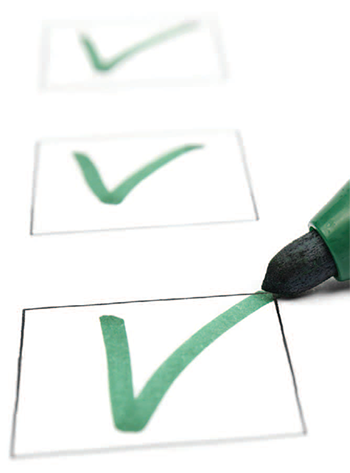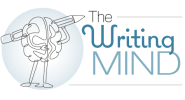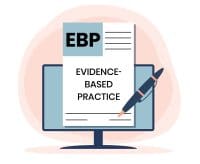Checklists have long been recognized as providing value to nurses and other clinicians engaging in patient care, with Atul Gawande touting their use to the general public in his classic book The Checklist Manifesto: How to Get Things Right, published in 2009. But did you know that checklists can help improve your writing? They’re particularly valuable for editing your article before submission, so that’s the focus here.
Why checklists?
Using a checklist can improve your editing, resulting in a high-quality manuscript that’s more likely to be accepted for publication. Kelly Schrank and Loretta Bohn, professional medical editors, list the following advantages of an editing checklist.
- Consistency—Check items such as acronyms, abbreviations, and terminology for key concepts are consistent.
- Structure—Ensure the manuscript meets the publication’s requirements regarding section order and needed information. For example, some journals provide specific guidelines on how to structure a “brief” research report.
- Productivity—Use the list to keep you focused on key items to check before submission.
Overall, having your manuscript in the best shape possible helps save time during revision.
What’s in a checklist?
Editing checklists vary, but they typically include specific items in the abstract, main text, and references. Here are some examples of topics commonly found in editing checklists:
- Check the format of each reference and verify citation accuracy.
- Check the numbering of figures and tables to ensure they match the text and that they’re numbered consecutively.
- Check that percentages add up to 100 or, if not, the discrepancy is explained.
- Check that abbreviations are spelled out on first use, with the abbreviation consistently used in the rest of the text. (A checklist might also have a section where you can list the abbreviations you used for easy reference.)
Checklists also frequently cover ancillary items such as the abstract, supplementary materials, conflict of interest statements, and acknowledgements. For example, you might be prompted to add keywords; ensure that the title page information matches the publication’s requirements; or double check author names, credentials, and affiliations.
Where can I find a checklist?
Here are three places to find checklists.
1. You can download an editing checklist from the American Medical Writers Association (AMWA)’s website at blog.amwa.org/medical-editing-checklist. It reflects three stages of editing:
- Macroediting—Review the big picture of the article (helps ensure the article is clear and well-organized and that it isn’t missing key information or has gaps in logic).
- Microediting—Examine the basic building blocks to improve factors such as grammar, tone, and clarity.
- Proofreading—Perform a final check to ensure nothing has been overlooked.
Although developed for professional medical editors, the checklist works for authors, too.
2. I created short editing and proofing checklists for the book Anatomy of Writing for Publication for Nurses. 4th ed. They’re part of a free writing resource PDF that you can download from the Sigma Repository.
3. Although not editing checklists per se, guidelines developed for specific types of articles may be helpful for macroediting. For example, the Squire 2.0 (Revised Standards for Quality Improvement Reporting Excellence) guidelines list essential elements to include in an article about a quality improvement project. Commonly used guidelines are listed in the free writing resource PDF.
A handy tool
Checklists can help you create a more effective piece of written work, which will boost your chances of disseminating your work more widely—the essential reason why we write. I encourage you to give checklists a try!
References
American Medical Writers Association. Medical editing checklist. blog.amwa.org/medical-editing-checklist
Holzmueller C. A systematic approach to manuscript editing. Open session report [Speakers: Bohn and Schrank]. AMWA J. 2022;37(2):14-5.
Marrelli TM, Morton PG. Submissions and revisions. In: Saver C. Anatomy of Writing for Publication for Nurses. 4th ed. Indianapolis, IN: Sigma Theta Tau International; 2021;109-120.
 Hi, I’m Cynthia Saver, MS, RN, president of CLS Development, Inc., which provides writing and editing services, and editor of Anatomy of Writing for Publication for Nurses, 4th ed. I’m also past editorial director for American Nurse Journal.
Hi, I’m Cynthia Saver, MS, RN, president of CLS Development, Inc., which provides writing and editing services, and editor of Anatomy of Writing for Publication for Nurses, 4th ed. I’m also past editorial director for American Nurse Journal.
I’ve been a full-time professional nurse writer and editor for many years, and that doesn’t count the writing I did as I fulfilled my nursing roles in clinical, research, education, and management. My passion is helping nurses share their expertise through the written word, including, but not limited to, publication. Writing can be scary and intimidating. I hope to make it less so and to help you develop your writing skills the same way you’ve developed your nursing skills.
Whether you’re considering your first or your 50th publication, want to contribute to your organization’s newsletter, or crave to be a better communicator online and in print, I hope you’ll find what I write helpful. The nurse publishing colleagues I’ve learned from over the years (many of whom are contributors to my book) may not be listed by name, but I’m grateful for their willingness to share. In that spirit, I’m looking forward to sharing with you! If you have feedback, feel free to email me at csaver57@gmail.com.



















